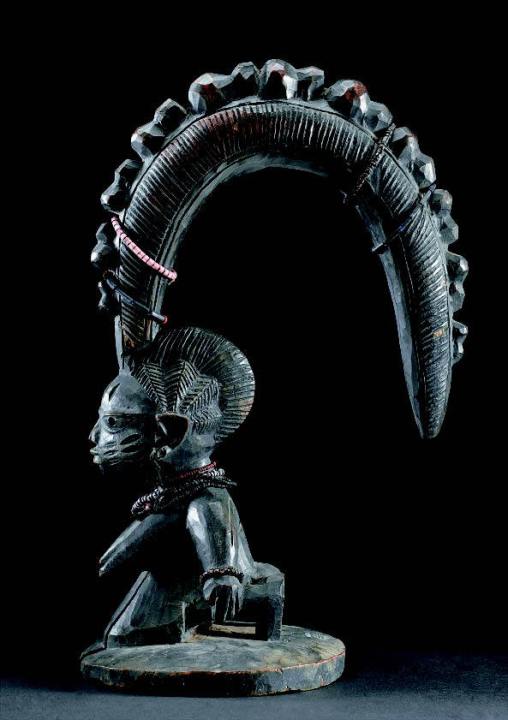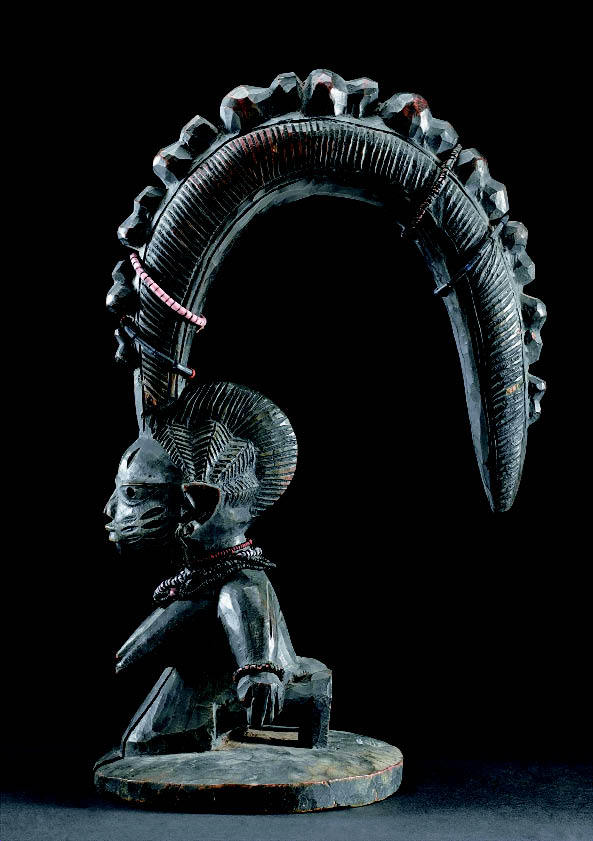Africa is the setting for several of V. S. Naipaul’s finest fictional stories — In a Free State, A Bend in the River, Half a Life.
Africa is the setting for several of V. S. Naipaul’s finest fictional stories — In a Free State, A Bend in the River, Half a Life. And there is a pattern to the themes in the African works: fear, post-colonial disintegration, isolation, approaching catastrophe, a sense of being trapped in a way of life that is hovering on the borders of savagery. It is an unforgettable vision, but it remains that of an outsider.
In The Masque of Africa, Naipaul goes deeper; this is the account of a journey through five countries with the purpose of ‘investigating the effects of African belief on the progress of civilisation’. As befits reportage, the style is clipped, sometimes cursory, as though written for a notebook, which may give readers the hope that this could become the prelude to a novel. Meanwhile it has its own value as an investigation into the least discussed aspect of African society today.
Naipaul starts in Uganda, because he once knew this country best. He lived there in 1966 and now says that he remembered it as a rather beautiful country with an independent future, and clear evidence of pre- colonial civilisation. This time he was appalled by what he found. The roads had fallen to pieces, the garbage lay uncollected, the trim bungalows had disappeared beneath piles of corrugated iron shacks, which were crammed together and falling down. The green hills he remembered so well were built over. ‘It seemed to me I was in a place where a calamity had occurred,’ he says. In 1966 the Ugandan population had numbered 5 million. Today it is estimated at over 30 million, and this growth has taken place despite nearly 30 years of civil war and a terrible Aids epidemic.
He spent much of his time with the Baganda, the once dominant tribe, and he recounts the decline that has taken place in their fortunes under two rulers, Idi Amin and the bloodthirsty university graduate, Milton Obote. Naipaul visits the sacred burial places of the Kabakas, rulers of a people who built straight roads and remarkable tomb palaces. These tombs are now derelict, abandoned by their devotees. In the 19th century their completion had been celebrated by the sacrifice of nine young men.
In Uganda, Naipaul notes a tension, that grows throughout his journey, between those who have embraced Christianity or Islam and escaped from the strength of African spirituality and those who regard the Christian missionaries as the most destructive of all the forces that invaded Africa. Adoption of western methods has not been a universal success. His last memory of Uganda is of the school children who are walking home in the extreme heat of mid-afternoon through the shanty towns, towards their future. They inhabit a country that has provided them with an education but is not in possession of a functioning economy. Most of those children will never find a job that requires them to read. But there is good news; the local paper reports that 6,000 Ugandans are now employed as security guards — in Iraq.
In Nigeria, Naipaul makes a cautious approach to more modern forms of belief. In ‘the sacred grove’ of the Oni of Ife he sees that monkeys are protected, whereas in downtown Lagos cats are prepared for the table by boiling them alive. (His love of animals is one of the distressing themes of the book — Africa is not the natural habitat of the animal-lover.) In the Ivory Coast he revisits the sacred crocodiles of Yamoussoukro, subject of a previous episode in his African travels, and finds the reptiles less frightening. As in Uganda, the power has drained out of the spectacle with the death of the chief. Then in Ghana he hears of abductions and human sacrifices. And the choice people have made becomes clearer; there are those who need a cultural identity and who honour the strength of the ancestors and traditional spirituality, and those who fear it, are repelled by it and want ‘to be free of it’.
Naipaul stays out of the argument, seeking witnesses on either side and listening to them patiently for as long as they make sense. He is intolerant of ranting and sometimes distracted by his irritation over money, the need to smooth the path with constant applications of cash. Now and again the courteous visitor’s mask slips and the voice of one of his outspoken fictional characters breaks through — ‘scratchings’ (for subsistence cultivation); ‘Christian agitation’ (for a frightened woman’s prayers). ‘How do Africans live with their history?’ he asks. ‘The absence of a script blurs the past . . . perhaps the oral story gives them only myths’.
Naipaul is not impressed with the refuge offered by the Christian missionaries. He attributes the martyrdom of Kabaka Mwanga’s 22 Christian pages to the king’s becoming ‘fed up’ with the ‘troublesome new religions’. And adds, ‘the Uganda church has made the most of its early misfortune’. A devotional study of this dramatic event seen in a Kampala church does not win favour. To his eye the pages being prepared for the bonfire look as though they are being ‘tucked in for the night’. This is the familiar voice: rasping, uninvolved, unimpressed, a hint of bleak humour, an icy coldness, but, somewhere beneath it all, the possibility of engagement and concern.
As he moves through Ghana and the Ivory Coast talk of ‘purification’ shades into ‘initiation’ then ‘ritual mutilation’, and finally ‘human sacrifice’. Ten years ago it was called ‘ritual murder’. That term does not appear in this book. There is a note of despair in some of the interviews. In Ghana, a sophisticated guide says, ‘Being born in Africa is like being born in ignorance.’ Another witness comments, ‘This land was not made for humans. You have to fight to survive.’ And yet there were good men and women in Africa long before the missionaries arrived. We know that from the records of Mungo Park.
This remains the account of one man’s journey and there are personal themes in the book: the love of helpless animals, the loathing of garbage, the exasperation with the constant demands for more money. But for most of the narrative Naipaul is on good behaviour. He wants to give irrationality a fair chance; in place of mockery he wants to understand. And in Gabon he is at last richly rewarded. On hearing of his plans the defence minister gives him transport, a guide and an armed guard. He witnesses an initiation. It is only a demonstration but he is drawn into the spectacle — ‘the great heat, the drumming, the shouts and shrieks … the feeling of an encroaching darkness’. Some of those dancing had taken an hallucinogenic herb. ‘Hallucinogenic for you,’ a professional lady comments. ‘For Africans it’s their reality.’ Naipaul acknowledges the absurdity of many traditional practices, but is in no doubt that they supply an urgent need, as well as evoking real danger and real fear.
He concludes with a visit to a sixth country, South Africa, but here he abandons the enquiry into belief and focuses on politics, which in South Africa means race. Here, ‘race ran as deep as religion elsewhere’. In a superb cameo of an interview with Winnie Mandela, he reports her views. She settles her accounts with Nelson, who was apparently a bit of a sell-out and a disappointment. She establishes the correct policy, not followed, on classic ANC-Communist party lines, and she ends by declaring her un- dying Xhosa tribal loyalties, and her devotion to traditional belief. The impossibility of making the ‘right’ choice is plain. Naipaul extracts all this with half a dozen questions. He sees little future for the country, which has been poisoned by apartheid.
T he Masque of Africa offers no solutions. Naipaul’s witnesses see no salvation in either the irrational or the colonial inheritance. Something does not fit. Perhaps it is, in his words, ‘the absence of a script’. Words in Africa are powerful magic. ‘In the beginning was the Word…’ The significant difference may be that we wrote our words down, we made a script and so were able to make a beginning.







Comments